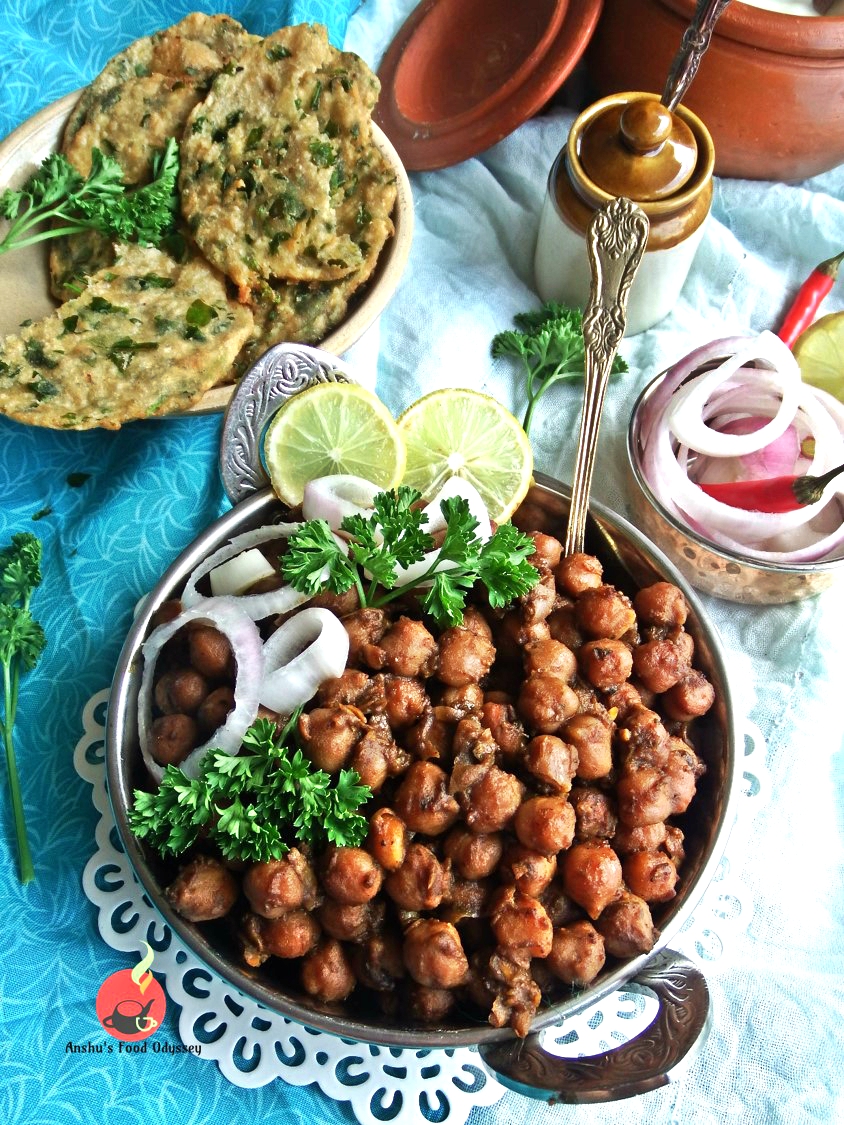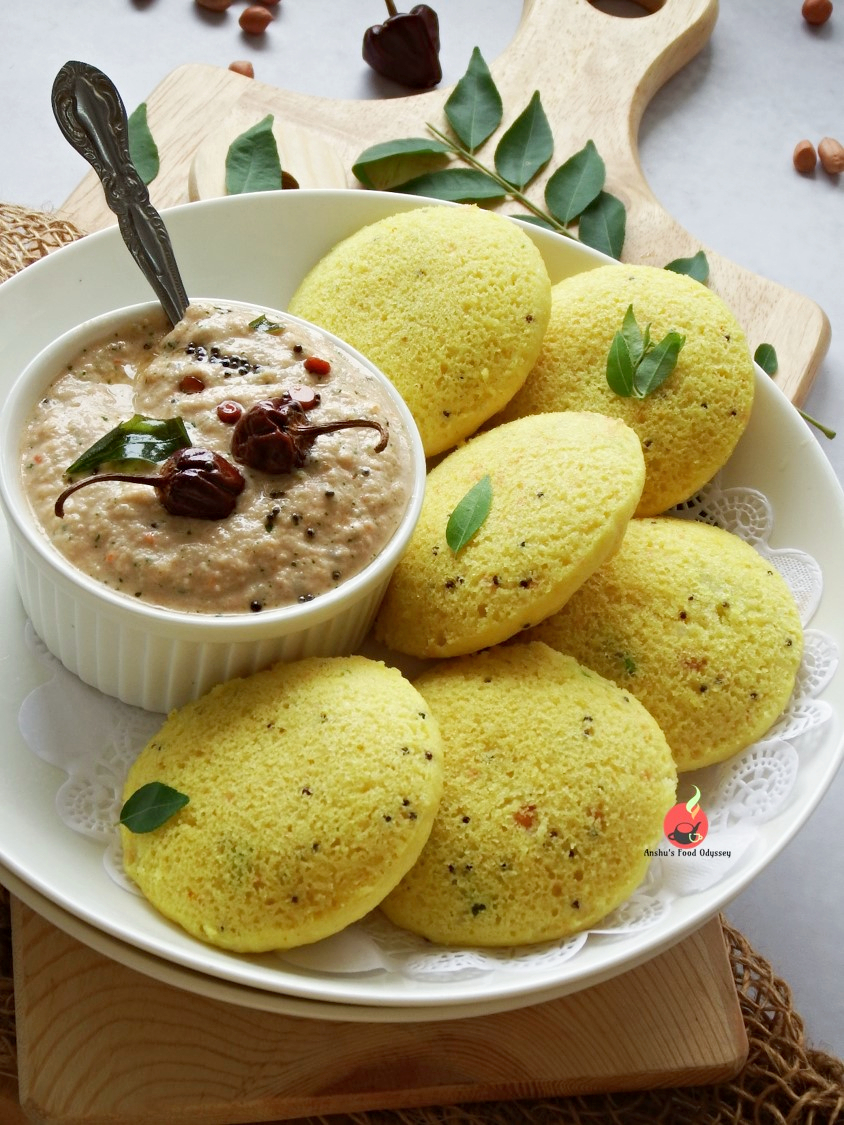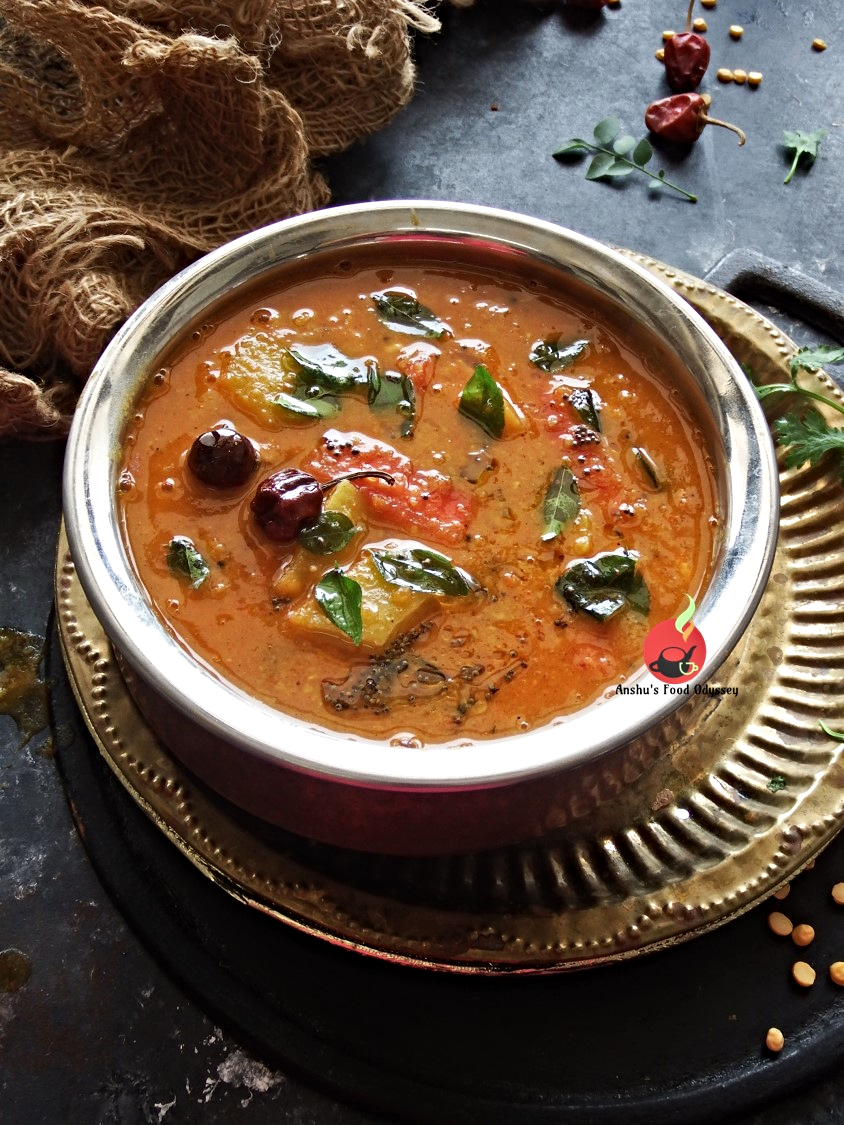Pindi Chholey | Indian Spiced Chickpeas
"Chholey" or chickpeas, also known as "Safed Chana" and "Kabuli Chana" are one of the most popular foods across Northern India...especially making for a quintessential part of the diet of Punjabis; and you would agree to this statement of mine considering the fact that Chholey Poori, Chholey Bhature, Chholey Kulchey, all originate from the land of Punjab.
While you would find a variety of chholey or chickpea curries made and served in Indian homes and restaurants, the ones that remain immensely popular comprise of "Punjabi Chikkad Chholey", "Amritsari Chholey" and "Pindi Chholey". The recipe of Chikkad Chholey is already on my blog and what today I am going to list down is the recipe of Pindi Chholey. But, before that let me brief you a little about the difference between the two varieties. Chikkad Chholey are basically thick curried chickpeas that are cooked in spiced onion and tomato based masala and this is a variety that you would come across in Punjabi households on a day to day basis. I personally like to relish them with rice but, they absolutely go well with pooris and parathas too.
Coming to the Pindi Chholey, they find their origin in the region of Rawalpindi, Punjab, Pakistan. A spicier variety of chickpeas, it involves boiled chickpeas to be first smeared with an assortment of spice powders, sliced onions and tomatoes, and are then tempered with sizzling oil. The oil trickles down the spices, lending a beautiful aroma and texture to the chickpeas. Needless to say, this is the variety that is usually served with bhaturas and pooris in dhabas and restaurants.
Having said that, there is one point to note that all Punjabi Chholey varieties make extensive use of anaardana powder; without it you would not get the authentic taste you are looking for in the chholey.
Now, not wasting any time further, let me detail out the full recipe of Pindi Chholey.
Ingredients
Chholey/Kabuli Chana/Chickpeas (soaked overnight) - 1 and 1/2 cups
Tea bags - 4 to 5
Dried amla (optional) - 2 to 3 pieces
Ginger (finely chopped) - 2 tbsp
Green chilies (split) - 3 to 4
Finely Sliced onions - 1 medium sized
Cubed tomatoes - 1 medium sized
Salt - to taste
Kashmiri Red chili powder - 2 to 3 tsp
Coriander powder - 1 tbsp
Anaardana powder - 2 tsp
Choley Masala (given below) - 3 to 4 tbsp
Rock salt - 2 tsp
Cumin seeds /jeera- 2 tbsp
Caraway seeds (ajwain) - 1/4 tsp
Cinnamon - 2 inch stick
Bay leaf - 2 to 3
Cloves - 4 to 5
Black pepper corns - 1/2 tbsp
Black cardamom - 4 to 5
Green cardamom - 3 to 4
Mace - 3 to 4 blades
Nutmeg - 1/4 peice
Method
1. First thoroughly rinse the soaked chickpeas with fresh water.
2. Then prepare the dry spice powder. Place all the whole spices in a pan and dry roast until fragrant. Let them cool then grind to a fine powder and set aside.
3. Add about 5 cups of water to the chickpeas along with 4 to 5 teabags, amla and some salt. Let them boil in a pressure cooker on medium flame for about 6 to 8 whistles. They should be completely cooked and soft.
4. Open the pressure cooker once it depressurizes naturally and separate the water from the chickpeas. Also, throw away the teabags and amla pieces. Set the water aside to use at a later stage. Sprinkle the fresh dry spice powder/choley masala, salt, black salt, red chili powder, coriander powder, anaardana powder and kasoori methi powder. Also, top with sliced onions, tomatoes, slit green chilies and chopped ginger over the boiled chickpeas and place the cooker on slow flame.
5. Simultaneously, heat the ghee/oil in a pan. Once its hot enough, pour this sizzling oil over the masala smeared chickpeas.
6. Cover and let the chickpeas cook for 5 minutes.
7. Next, add about a cup of water set aside in the chholey and let them simmer for about 20 minutes or until all the masalas have coated the chickpeas nicely.
8. In the end, garnish with freshly chopped coriander and serve hot with bhaturas and some raw onions and chilies on the side.
If you have liked my post, do share your feedback in the comments section below and give a thumbs up to my Facebook Page. You can now also follow me on twitter and Instagram.
- Anshu
While you would find a variety of chholey or chickpea curries made and served in Indian homes and restaurants, the ones that remain immensely popular comprise of "Punjabi Chikkad Chholey", "Amritsari Chholey" and "Pindi Chholey". The recipe of Chikkad Chholey is already on my blog and what today I am going to list down is the recipe of Pindi Chholey. But, before that let me brief you a little about the difference between the two varieties. Chikkad Chholey are basically thick curried chickpeas that are cooked in spiced onion and tomato based masala and this is a variety that you would come across in Punjabi households on a day to day basis. I personally like to relish them with rice but, they absolutely go well with pooris and parathas too.
Coming to the Pindi Chholey, they find their origin in the region of Rawalpindi, Punjab, Pakistan. A spicier variety of chickpeas, it involves boiled chickpeas to be first smeared with an assortment of spice powders, sliced onions and tomatoes, and are then tempered with sizzling oil. The oil trickles down the spices, lending a beautiful aroma and texture to the chickpeas. Needless to say, this is the variety that is usually served with bhaturas and pooris in dhabas and restaurants.
Having said that, there is one point to note that all Punjabi Chholey varieties make extensive use of anaardana powder; without it you would not get the authentic taste you are looking for in the chholey.
Now, not wasting any time further, let me detail out the full recipe of Pindi Chholey.
 |
| Pindi Chholey |
Ingredients
Chholey/Kabuli Chana/Chickpeas (soaked overnight) - 1 and 1/2 cups
Tea bags - 4 to 5
Dried amla (optional) - 2 to 3 pieces
Ginger (finely chopped) - 2 tbsp
Green chilies (split) - 3 to 4
Finely Sliced onions - 1 medium sized
Cubed tomatoes - 1 medium sized
Salt - to taste
Kashmiri Red chili powder - 2 to 3 tsp
Coriander powder - 1 tbsp
Anaardana powder - 2 tsp
Choley Masala (given below) - 3 to 4 tbsp
Rock salt - 2 tsp
Kasoori methi powder - 1 to 2 tsp
Ghee or oil - 1/2 cup
Ghee or oil - 1/2 cup
Chopped coriander - for garnishing
Dry Spice Powder/ Choley MasalaCumin seeds /jeera- 2 tbsp
Caraway seeds (ajwain) - 1/4 tsp
Cinnamon - 2 inch stick
Bay leaf - 2 to 3
Cloves - 4 to 5
Black pepper corns - 1/2 tbsp
Black cardamom - 4 to 5
Green cardamom - 3 to 4
Mace - 3 to 4 blades
Nutmeg - 1/4 peice
 |
| Pindi Chholey |
 |
| Pindi Chholey |
Method
1. First thoroughly rinse the soaked chickpeas with fresh water.
2. Then prepare the dry spice powder. Place all the whole spices in a pan and dry roast until fragrant. Let them cool then grind to a fine powder and set aside.
3. Add about 5 cups of water to the chickpeas along with 4 to 5 teabags, amla and some salt. Let them boil in a pressure cooker on medium flame for about 6 to 8 whistles. They should be completely cooked and soft.
4. Open the pressure cooker once it depressurizes naturally and separate the water from the chickpeas. Also, throw away the teabags and amla pieces. Set the water aside to use at a later stage. Sprinkle the fresh dry spice powder/choley masala, salt, black salt, red chili powder, coriander powder, anaardana powder and kasoori methi powder. Also, top with sliced onions, tomatoes, slit green chilies and chopped ginger over the boiled chickpeas and place the cooker on slow flame.
5. Simultaneously, heat the ghee/oil in a pan. Once its hot enough, pour this sizzling oil over the masala smeared chickpeas.
6. Cover and let the chickpeas cook for 5 minutes.
7. Next, add about a cup of water set aside in the chholey and let them simmer for about 20 minutes or until all the masalas have coated the chickpeas nicely.
8. In the end, garnish with freshly chopped coriander and serve hot with bhaturas and some raw onions and chilies on the side.
 |
| Pindi Chholey |
 |
| Pindi Chholey |
 |
| Pindi Chholey |
If you have liked my post, do share your feedback in the comments section below and give a thumbs up to my Facebook Page. You can now also follow me on twitter and Instagram.
- Anshu







Comments
Post a Comment
Thanks for stopping by. Your comments, suggestions and feedback are always welcome.
Regards